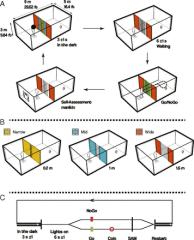
Using electroencephalography and virtual reality, our research provides a unique perspective on the centuries-old open-ended debate in cognitive neuroscience and philosophy on the relationship among cognition, movement, and environment. Our results indicate that cortical potentials vary as a function of bodily affordances reflected by the physical environment. First, the results imply that cognition is inherently related to the potential movement of the body; thus, we posit that action is interrelated with perception, actively influencing the perceivable environment. Second, these results indicate that moving in space is to continuously construct a prediction of a world of affordances, suggesting that architects take up the continuity of spaces, given that the unfolding of bodily movement alters perception and experience.